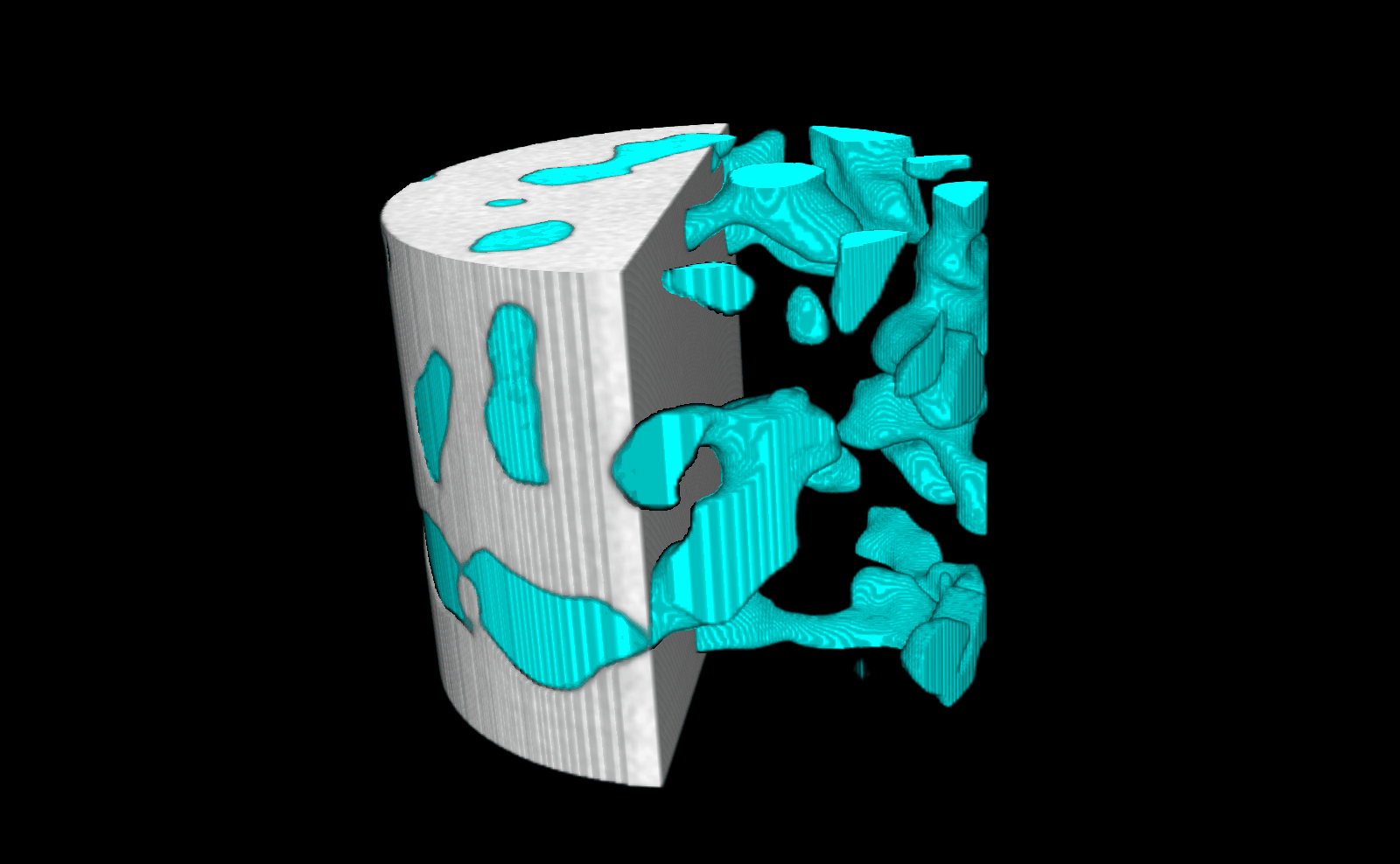What we do: Utilize 4D tomography to nondestructively characterize mass transport and deformation in natural and engineered geomaterials.
Ongoing work builds on Lindqwister et al. (2025) where we examine the ability of deep neural networks (DNNs) to predict four key geometric morphometers needed to characterize a material's microstructure - porosity, surface area, mean curvature, and Euler characteristic. The DNN improves when physics-informed domain knowledge is used to guide the model. The next step is to study the evolution of the morphometers under uniaxial compression.

Absorption of water in portland cement concrete captured using simultaneous X-ray computed tomography and neutron tomography (NeXT system located at NIST). Neutrons and X-rays “see” materials differently due to differences in their interactions with nuclei and atomic electrons. Neutrons excel at detecting water, while X-rays resolve materials with high atomic mass such as dense solids. Multi-modality imaging can be used to generate complementary data to visualize the multi-faceted complexities of water transport in porous materials. Paper link.

Reactive transport in portland cement mortar observed using X-ray micro-computed tomography. As CO2 moves through a portland cement-based material CO2 chemically reacts to form calcium carbonate which permanently binds CO2 in mineral form. In our team, we are investigating carbonation front advancement in geo-materials as a CO2 utilization and mitigation strategy.

Transport of water in damaged portland cement concrete observed using electrical capacitance tomography (ECT). Electrical tomography is a nondestructive imaging technique with high temporal resolution (< 1 second) capabilities. ECT can image rapid transport in damaged portland cement-based materials. In understanding how water moves through portland cement-based materials, we can improve both the durability and the service-life of concrete infrastructure with potential for field monitoring. Paper link.

Climate change is the global challenge. One solution is Carbon Capture and Storage (CCS) storage of CO2 in geological formations deep below the earth's surface. In studying how CO2 is stored in geological porous media where the environment involves both high temperatures and high pressure, we can better understand methods to improve CO2 storage efficiency. Paper link.







